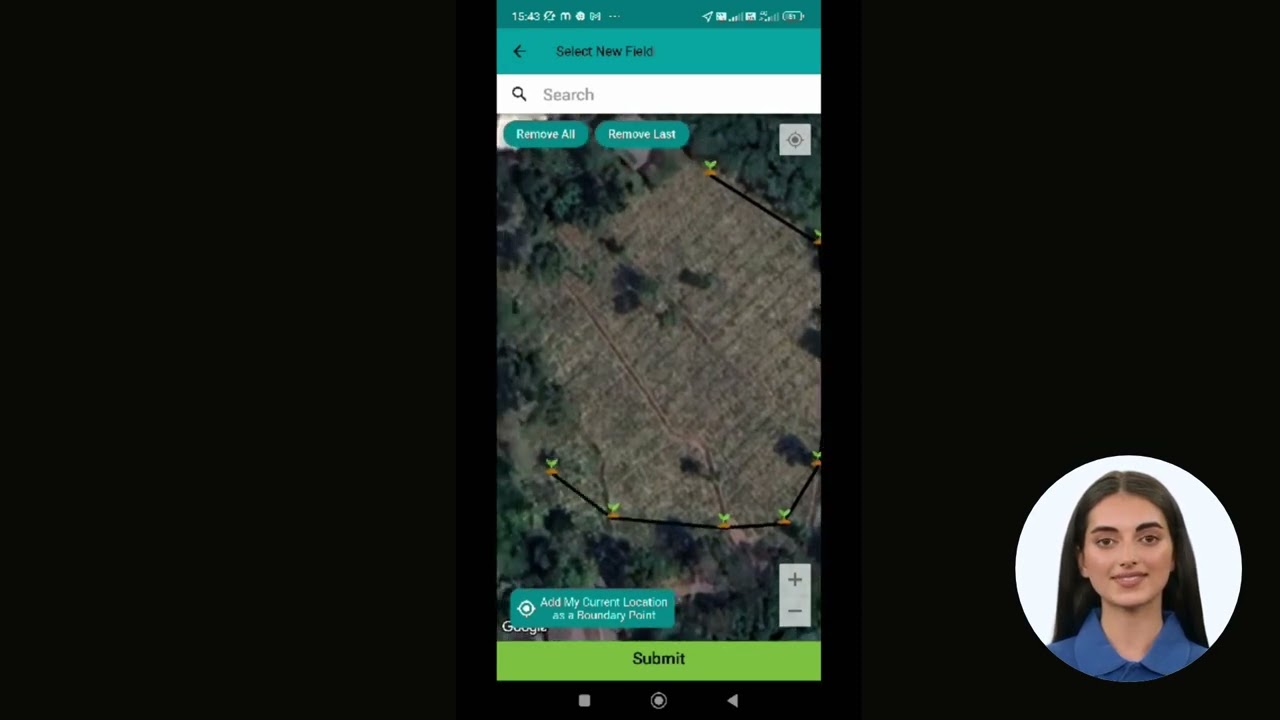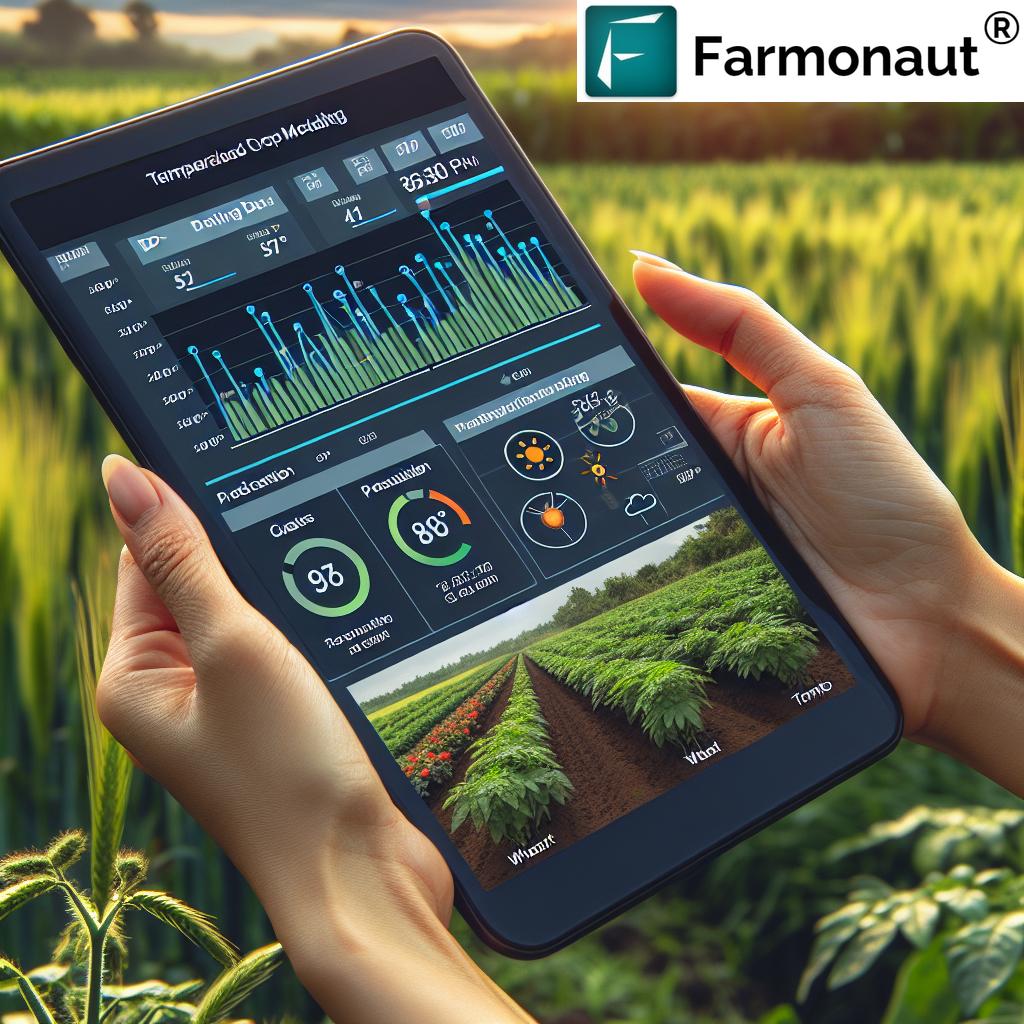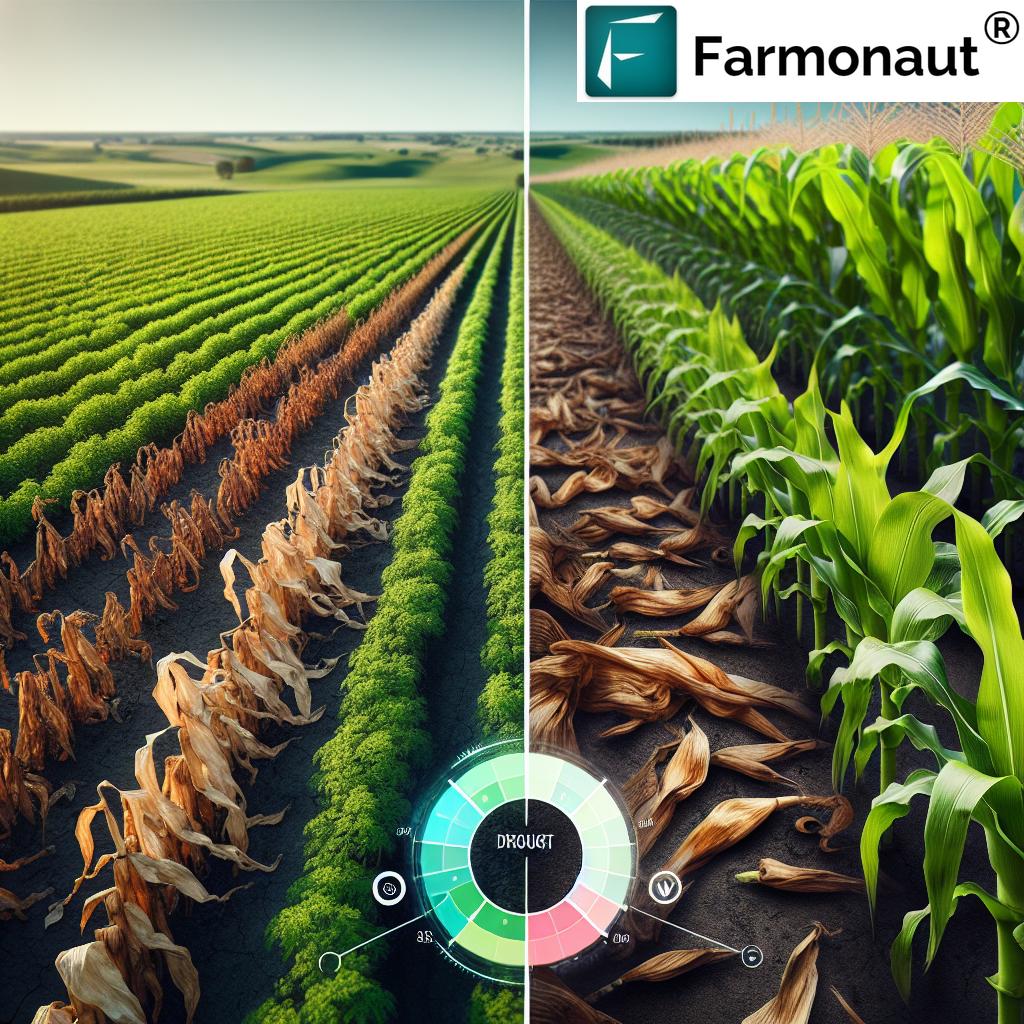Growing Degree Days Zip Code: Secret to NC Crop Success!
“Did you know? North Carolina farmers track over 2,500 GDDs yearly to optimize crop growth and harvest timing!”
Introduction: Harnessing Growing Degree Days for North Carolina’s Crop Success
Growing Degree Days (GDD) are transforming agriculture, farming, and forestry across North Carolina and beyond. But what makes these “heat units” so important? How do temperature, GDD accumulation, and base temperature for crops unlock new levels of productivity, pest management, and sustainability?
As farmers and foresters, we rely on temperature-driven growth processes for our plants and crops. Understanding and calculating GDDs helps us optimize planting, pest management, and harvest timing—directly improving yield, quality, and profitability.
In this comprehensive guide, we’ll introduce the science behind growing degree days, reveal why GDD calculation is essential for North Carolina (NC) agriculture, and show how local data—right down to your zip code—enables smarter, more sustainable farming. We’ll also explore advanced tools like satellite-driven crop monitoring and AI-powered advisory systems from Farmonaut, which are changing the game for precision agriculture.
Understanding Growing Degree Days (GDD): The Science and Its Value
At the heart of all temperature-based crop modeling is the concept of GDD. Growing Degree Days measure the accumulation of heat above a threshold or base temperature—the minimum temperature where a plant or insect species starts to develop. This makes GDDs a standardized tool for quantifying heat accumulation throughout the growing season.
- Plants and insects are cold-blooded: Their growth and development depend highly on ambient temperatures.
- GDDs help predict development stages: By tracking the accumulation of heat units, we can estimate timing for germination, flowering, fruiting, and harvest.
- Pest management in agriculture: Many insect pests have life cycles closely tied to GDD accumulation, allowing us to anticipate risk and implement control measures precisely.
Why is this so important for North Carolina?
North Carolina’s diverse climate means that different counties—and even different fields within a zip code—will experience different daily temperature patterns, affecting crop growth, maturity, and pest emergence.
How Does GDD Measurement Work? GDD Calculation Basics
We calculate GDD by measuring how much each day’s average temperature exceeds a crop’s base (minimum) growth temperature. This gives us a running total—GDD accumulation—that directly informs our field management decisions.
The Formula: Calculating Growing Degree Days
The growing degree days (GDD) formula is:
GDD = (Tmax + Tmin) / 2 - Tbase
- Tmax = Maximum daily temperature (°F or °C)
- Tmin = Minimum daily temperature
- Tbase = Base (minimum) temperature for the specific crop species
If the computed value is below zero, we set it to zero. Many plants won’t develop below their minimum threshold, and negative GDDs are ignored in accumulation calculations.
Additionally, we sometimes cap the maximum daily temperature for crops—often at 30°C (86°F)—because growth often slows above this threshold, and not doing so could otherwise overestimate GDD accumulation.
Example: GDD Calculation for Corn in Central North Carolina
Let’s say today’s max is 85°F, min is 60°F, and the base temperature for corn is 50°F:
GDD = ((85 + 60)/2) - 50 = (145/2) - 50 = 72.5 - 50 = 22.5
We add this value to our season’s GDD accumulation to track crop development stages.
Base Temperature for Crops: Key to Growth & GDD Accuracy
Every crop (and major agricultural pest) has a unique base temperature—its minimum temperature for metabolic activity and development processes. Using the correct base temperature is crucial for accurate GDD calculation and plant growth prediction.
| Crop | Base Temp (°F) | Base Temp (°C) |
|---|---|---|
| Corn | 50°F | 10°C |
| Soybeans | 50°F | 10°C |
| Wheat | 40°F | 4.5°C |
| Tomato | 50°F | 10°C |
| Potato | 40°F | 4.5°C |
These values are experimentally determined for each species and are the basis for all accurate temperature-based crop modeling and GDD tracking.
Using Growing Degree Days by Zip Code in North Carolina
For North Carolina growers, regional and local differences in temperature mean that GDD accumulation varies by location. That’s why real-world applications always use growing degree days by zip code or county-level data for precision agriculture.
- Localized tracking ensures accuracy: Each zip code may have unique microclimates influencing crop development and pest emergence timelines.
- Practical for field decisions: By accessing GDD information by zip code, we can plan optimal planting and harvesting schedules, pest management, and other key operations tailored to local environmental conditions.
Across NC, you can utilize public GDD data tools:
-
North Carolina GDD Explorer
: High-res, zip code-specific GDD maps for crop and pest management. -
USA National Phenology Network AGDD Maps
: Daily, interactive GDD accumulation maps at various base temperature thresholds. -
Farmwest GDD Tools
: In-depth guides and calculators for heat accumulation, pest control, and crop planning.
For NC’s wide range of crops and diverse microclimates, GDD by zip code is the gold standard for precision agriculture tools. This drives decision-making, resource optimization, and improved sustainability across the state’s agricultural landscape.
GDD API & Data Integration for Smart Farming
For developers and agritech companies building custom solutions, access live GDD and weather data via Farmonaut’s
Satellite & Weather Data API. Full documentation is available here. With this API, you can integrate precise, zip code-specific GDD data into your platforms and mobile apps.
Estimated Growing Degree Days (GDD) and Crop Milestones by NC Zip Code
To put these concepts into practice, here’s a comparative table for North Carolina, showing how GDD, base temperature, and region affect planting, harvest, and pest risk.
| Zip Code / Region | Est. Annual GDD (Base 50°F) | Example Base Temp (°F) | Main Crop(s) Grown | Typical Planting Date | Typical Harvest Date | Pest Risk Level |
|---|---|---|---|---|---|---|
| 27516 (Chapel Hill) | 2700 | 50 | Corn, Soybeans, Wheat | Apr 5–15 | Sept 10–25 | Medium |
| 28732 (Asheville Area) | 2100 | 50 | Potatoes, Wheat, Apples | Apr 20–30 | Oct 1–15 | Low |
| 27858 (Greenville) | 2900 | 50 | Soybeans, Corn, Tobacco | Apr 1–10 | Aug 25–Sept 15 | High |
| 28301 (Fayetteville) | 3100 | 50 | Corn, Soybeans, Peanuts | Mar 25–Apr 5 | Aug 20–Sept 10 | Medium |
| 28403 (Wilmington) | 3200 | 50 | Tomato, Corn, Beans | Mar 18–28 | Aug 10–Aug 30 | High |
| 27215 (Burlington) | 2500 | 50 | Wheat, Soybeans, Corn | Apr 10–18 | Sept 12–26 | Medium |
“Precision agriculture tools in NC analyze GDDs with base temperatures as low as 10°C for accurate pest management.”
Core Applications of Growing Degree Days in North Carolina Agriculture
1. Crop Development Stages & Maturity: Predicting with GDD Accumulation
For North Carolina farmers, GDD tracking is instrumental in predicting key crop development stages:
- From planting onwards, we accumulate daily GDDs to estimate when a crop reaches important phenological stages—such as germination, flowering, fruit set, grain fill, and maturity.
- For corn, different varieties may require between 800 to 2,700 GDDs (base 50°F) to reach maturity. Knowing GDD accumulation helps us optimize harvest timing for maximum yield and quality.
- Tomatoes, potatoes, wheat, soybeans, and other NC crops all have their own specific GDD requirements for maturity.
This level of prediction is the foundation of effective, sustainable farming practices—enabling us to plan labor resourcing, irrigation schedules, and input timing precisely!
2. Pest Management in Agriculture: Using GDDs to Time Interventions
Pest and insect development is also GDD-driven—a fundamental tool for bringing science to pest management in agriculture:
- Many major pests, such as corn earworm or soybean aphid, have life stages synchronized to temperature-based GDD accumulation.
- By monitoring local GDDs by zip code, we predict pest emergence and peak risk periods—and implement control measures in the most effective, targeted window.
- Proper timing reduces pesticide use, minimizes crop damage, and helps us adopt traceable, sustainable farm practices.
3. Planting and Harvest Schedules: Maximizing Yield with Temperature Data
- By understanding crop-specific GDD requirements, we can choose optimal planting dates that align with historical and forecasted GDD accumulation.
- This approach reduces risk of frost or heat stress, maximizes growing days, and helps us schedule harvests for peak quality.
- Throughout NC, this can differ significantly—what works for one zip code may not for another, which is why local large-scale and farm management solutions are so valuable.
4. Adapting to Climate Change: GDD Trends Shape the Future
- GDD accumulation patterns are shifting—as climate change accelerates, NC is experiencing longer growing seasons and shifting pest threats.
- Studies show: Between 1970 and 2021, 97% of US climate stations observed a significant increase in annual GDDs (mean: +525 GDDs).
- Tracking GDDs by zip code in NC is essential for adapting planting and pest management to the new climate reality.
Technology & Innovation: Advanced GDD Applications for North Carolina Farmers
Satellite-Based GDD Monitoring in Precision Agriculture
Modern farming in North Carolina now leverages satellite-based temperature and GDD models. Utilizing satellite imagery and AI-powered analytics platforms—like those developed by Farmonaut—we can:
- Monitor GDD accumulation in real-time over vast areas, from field to county to regional scales—even in highly variable terrain.
- Overlay GDD data with NDVI (crop health indices), soil moisture, and weather predictions for a holistic overview of field and crop status.
- Integrate machine learning to enhance pest emergence prediction and plant development models, adapting instantly to local microclimates.
This enables smarter, faster, and more precise interventions—from planting to pest management to harvest—directly on our tablets or smartphones!
Machine Learning and AI: Next-Level Accuracy for Plant Growth Prediction
As technology continues to advance, machine learning models are revolutionizing how we use GDD data. These models:
- Incorporate environmental variables beyond just temperature: moisture, sunlight, wind, and local historical data.
- Deliver highly accurate, zip code-specific or field-specific recommendations for planting, pest management, irrigation, and harvest schedules.
- Continuously adapt as new data becomes available, increasing the accuracy and value of plant growth predictions and management recommendations.
Farmonaut’s Satellite-Powered GDD and Precision Agriculture Solutions
Farmonaut is at the forefront of putting innovative GDD, weather, and precision agriculture tools directly into the hands of NC farmers, agribusinesses, and foresters. Our platform offers integrated, satellite-driven solutions designed to make GDD tracking—and its countless benefits—affordable and accessible:
-
Real-Time Satellite Crop Health Monitoring:
With multispectral images, you can visualize temperature trends and GDD accumulation field-by-field throughout the growing season, enabling informed decisions on irrigation, inputs, and pest management.
Try our app for free -
AI-Based Farm Advisory:
Our Jeevn AI system delivers personalized, real-time crop management advice—including weather and GDD analytics—optimized for North Carolina’s distinct microclimates. -
Resource and Fleet Management:
Fleet & Resource Management Tools allow farms and agribusinesses to coordinate machinery use, optimize routes, and ensure logistics keep up with changing crop development, all guided by live GDD and weather mapping. -
Blockchain-Based Product Traceability:
Trace every crop’s journey from field to fork. This feature is especially powerful for compliance, food safety, and demonstrating sustainable, science-driven farm management. -
Carbon Footprinting for Climate-Smart Farming:
As GDD accumulation patterns shift, measure and adjust your operations for sustainability (see Farmonaut’s Carbon Footprint Tracking). -
Large-Scale and Plantation Management:
Specialized tools for managing vast agricultural operations in real time—track every field’s GDDs, crop health, and pest risk, automating repetitive processes and maximizing productivity.
All services are available via Web, Android, and iOS apps. For large agribusinesses or research teams, our team enables API integration, project set-up, or custom support. Get started or try the app for free today!
Farmonaut Subscriptions: Affordable Precision for Every North Carolina Farm
Ready to take your field management and crop performance in North Carolina to new heights? Select your plan and be among the first in your county to use satellite intelligence, AI-based GDD insights, and next-gen farm technology to optimize growth, pest management, and sustainability.
FAQ: Growing Degree Days, GDD Applications, and Crop Success in NC
-
What are Growing Degree Days (GDD) and why do they matter in NC?
GDD are a temperature-based metric that quantifies heat accumulation above a crop’s base temperature (minimum development threshold). They’re essential in North Carolina for timing crop development, optimizing planting, guiding harvest, and predicting the emergence of agricultural pests. Localized GDD data by zip code enables precise, field-level management and greater resilience against weather variability and climate change effects.
-
How do GDD help with pest management in agriculture?
Many insect pests and fungal pathogens develop in tandem with temperature (and thus GDD accumulation). Monitoring GDDs helps forecast pest emergence and life stages—enabling us to apply biological, cultural, or chemical controls at the most effective time possible, often minimizing pesticide use and crop losses.
-
How do I calculate GDD for my field if I know my zip code’s daily temperatures?
Use the formula:
GDD = (daily max temp + daily min temp)/2 – base temp for your crop.
Add each day’s GDD value to your running season total (if the result is negative, use zero).
Many NC growers use online calculators or precision agriculture apps like Farmonaut to automate this process. -
Where can I get accurate, zip code-specific GDD accumulation and weather data for my area?
For localized and up-to-date GDD data, use tools such as NC State’s GDD Explorer, USA-NPN AGDD maps, or agtech platforms like Farmonaut for field and zip-specific GDD monitoring.
-
How do base temperature differences impact my GDD calculation and crop?
Using the correct base temperature for your chosen species is crucial—using a base that’s too high or too low will lead to poor predictions of crop development, maturity, and pest emergence. For most NC crops: Corn and Soybeans = 50°F; Wheat and Potato = 40°F; Tomatoes = 50°F.
-
Can I integrate GDD, satellite data, or weather models into third-party apps or platforms?
Yes! Use the Farmonaut Satellite & Weather API (see developer docs) for live integration of GDD, temperature, and crop monitoring data.
-
What is the benefit of satellite-based monitoring over traditional manual GDD recording?
Satellite-based systems offer immense scale, objectivity, and real-time accuracy. You can monitor large areas, receive automated alerts, view trends instantly, and cross-correlate with actual crop health data—empowering fast and precise interventions that can’t be matched with pen and paper.
-
Are Farmonaut’s solutions available for both small and large farms?
Yes. Farmonaut’s platform is scalable—from family farms to plantations, cooperatives, and even government projects. We offer flexible subscriptions, API access, and multi-user dashboards for tailored farm management.
-
Do you support forestry, loan approval, or insurance verification with GDD and satellite data?
Yes! Satellite tracking can verify forest cover, monitor replanting, and provide evidence for crop loans and insurance claims—see our crop loan and insurance solutions for more details.
-
How do I get started with Farmonaut’s GDD tracking solutions?
Simply download the app, sign up, and start mapping your fields today. Our support team is ready to assist with onboarding, API integration, or advanced configuration for your region.
Conclusion: GDD, Technology, and the Future of Smart Agriculture in NC
North Carolina’s success in agriculture increasingly relies on understanding and applying growing degree days, localized temperature data, and precision management tools. By embracing GDD measurement—down to the zip code—we gain clear insight into plant and insect development, optimize planting and harvest schedules, sharpen pest control, and boost sustainability across the state’s fields and forests.
Tools and platforms such as Farmonaut not only provide real-time, affordable access to satellite-driven GDD and temperature insights, but also help us integrate machine learning, blockchain traceability, and environmental tracking into everyday operations. This systems-driven approach supports every North Carolina farmer, forester, agribusiness, and stakeholder in building a more productive, profitable, and resilient future.
Whether you manage a small family plot or thousands of acres, science-based GDD tracking—tailored to your crop, field, and zip code—is the secret to sustainable, climate-smart, technology-enabled crop success.
Are you ready to revolutionize your farm management with real-time satellite data, AI-driven planting decisions, and temperature-powered GDD analytics?
Try Farmonaut today and let’s grow a better future together!






















